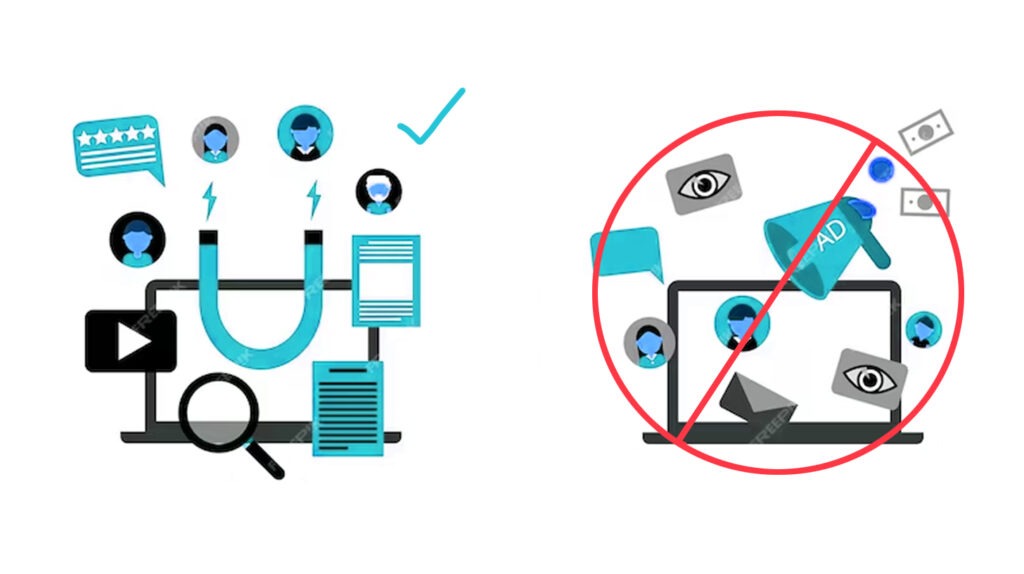
Picture this: You’re an entrepreneur, driven by the relentless pursuit of turning your vision into reality. You’ve identified a problem or a goal, and you’ve developed a product or service to address it. But there’s a catch – your target audience seems uninterested, and you’re left wondering where you went wrong. This is where the art of marketing comes into play. In this blog, we’ll explore the intricate relationship between your market and marketing, and how understanding your audience is the key to success.
Every entrepreneur has a story to tell, and mine begins with a fundamental misunderstanding of marketing. In this narrative, I’ll share what marketing is and is not which I have learned the hard way.

What marketing is not?
If you have it they will buy it: As a budding entrepreneur in Bangalore, I was passionate about my product Learnabcxyz.com. I believed that once my product was ready, it would automatically find its audience. This misconception backfired like a cold splash of water on a winter morning, jolting me awake.
Marketing ≠ Advertising: I regretfully invested a significant portion of my budget in flashy ads without understanding my target audience. We need to understand that Advertising is like a megaphone but Marketing is not merely the megaphone but also the attentive ear, listening to customer needs.

No Market Research = No Marketing: I naively believed that my product was so revolutionary that it didn’t need market research. I still see 95% of fellow entrepreneurs doing the same mistake of building the business castle in thin air without market research.

It’s not “One-and-Done” Approach: I assumed that marketing was a one-time effort, something to check off my to-do list. This mindset hurts you most as it’s like planting a single seed and expecting a forest to grow.”

This journey from misunderstanding marketing to embracing its true essence taught me invaluable life lessons. Let’s zoom in on a few basics in this blog. Here is my idea of marketing and related important concepts:
Understanding the Prospect and Market Dynamics
Imagine you’re an entrepreneur looking to launch a new fitness app. Your goal is to attract users who want to get in shape. To do this effectively, you need to grasp the concept that a prospect is someone with a conflict.

1. The Prospect – A Person in Conflict
A prospect, in essence, is someone who is not at peace but frustrated with their current situation i.e. they haven’t yet got the outcome they want. This could manifest as an unresolved problem or an unattained goal. Let’s break down these two aspects:
Unresolved Problem: Consider an individual who has been struggling with weight gain. Despite multiple attempts at dieting and exercising, they can’t seem to shed those extra pounds. This unresolved problem creates a conflict within them – a desire to be healthy and fit but an inability to achieve it.

Unattained Goal: Now, think of a person who aspires to run a marathon. They’ve set this goal for themselves but have never been able to cross the finish line due to various obstacles. This unattained goal represents another form of conflict – the gap between where they are and where they want to be.

2. The Market – A Community of Shared Conflicts
Now, let’s transition from the individual prospect to the broader concept of the market. The market consists of a group of people who share similar conflicts. In our fitness app example, the market comprises individuals who are struggling with weight issues or aiming to achieve fitness goals.
What sets this market apart is frustration. It’s a market filled with people who have tried to resolve their conflicts but have been unsuccessful in doing so. This frustration often leads to a sense of hopelessness and a loss of faith in one’s ability to solve the problem.

3. The Role of Marketing
Now that we understand the essence of a market, let’s delve into the pivotal role of marketing. At its core, marketing is about teaching others how to value a product. It’s about igniting hope, shaping perceptions and framing reality in a way that deeply resonates with the target audience.

4. Your Role as a Marketer
As an entrepreneur, your job is not just to sell a product but to teach people how to value it. If your audience isn’t showing interest in what you’re offering, it’s likely due to the presentation, not the product itself. This is where the marketer steps in, crafting a message that not only informs but also inspires and captivates. Here is how it starts:

4.1 Understanding Your Audience
Marketing isn’t about pushing your message; it’s about resonating with your audience on a profound level. Imagine starting your pitch with the cliché, “I know you’re overwhelmed.” In today’s noisy world, it’s a mere whisper in a hurricane of other voices saying the same thing. To truly connect, you need to go beyond mere words. You must show, rather than tell.

4.2 Perception Matters: Outsourcing vs. 4-Hour Work Week
Let’s examine the power of perception in marketing. Consider the concept of “outsourcing” – a term often associated with cost-cutting and job displacement. Now, contrast this with Tim Ferris’s “4-Hour Work Week.” Both ideas revolve around outsourcing, but the latter is presented in a far more appealing and enticing manner.
This stark contrast demonstrates the importance of framing your message in a way that resonates positively with your audience.
4.3 Dive Deeper into the frustrations and what they feel like?
To create that essential connection, you must delve deeper into your audience’s emotions. Understand the daily struggles they face and evoke emotions that mirror those frustrations. It’s not about stating problems; it’s about demonstrating a deep understanding of them. Show them the futility of their current path, and more importantly, guide them towards a better way.
As you embark on your entrepreneurial journey, keep in mind that the market and marketing are inextricably linked. By understanding this relationship, you’ll be much better equipped to navigate the complex world of business growth, marketing, and strategy.

The lie fed to us by big tech:
Creating social media posts, running ads on google, meta and other big tech networks has deceptively become synonymous to marketing now a days. It’s a blatant lie fed to the us by the big tech itself. In reality these actives cover only the message distribution part of marking which is merely a tip of the entire marketing iceberg. 90% of actual marketing happens by understanding and resonating with the psychology of your market. My this series of blogs I will be covering this in detail. Stay tuned!

